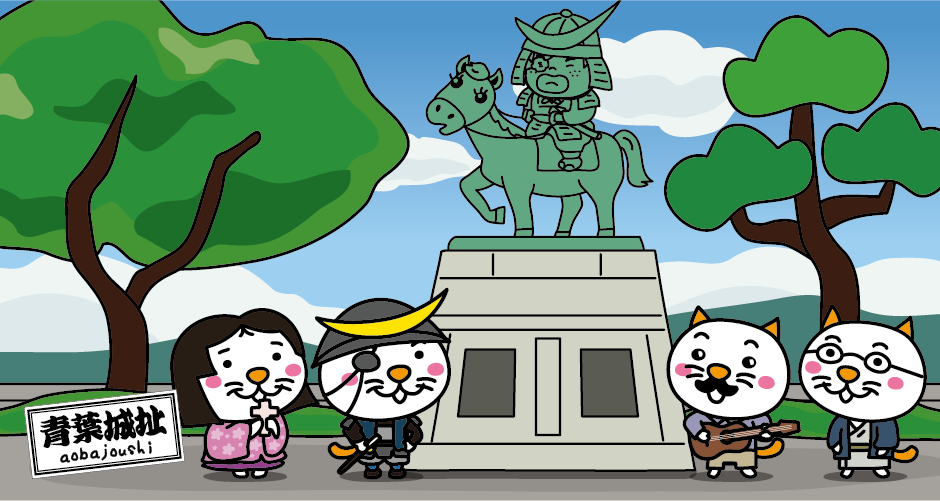If you visit Sendai, you definitely want to see the equestrian statue of Masamune Date at the Sendai Castle ruins. It is an image of a one-eyed dragon, but it does not have an eyepatch. What does that mean?
Sendai Castle, located in Sendai City, Miyagi Prefecture, was built by Masamune Date, the 17th head of the Date family and the first lord of the Sendai domain. Honmaru (main enclosure) was completed in 1602. Although the castle tower base was built, it is said that the castle tower was not built in order to avoid Ieyasu Tokugawa’s caution.
Sendai Castle is located on Mt. Aoba, so it is affectionately called “Aoba Castle” by the locals. Currently, Sendai Castle is a popular sightseeing spot in Sendai City as the “Sendai Castle Ruins” or “Aoba Castle Ruins”.
Bird’s-eye view of Sendai Castle
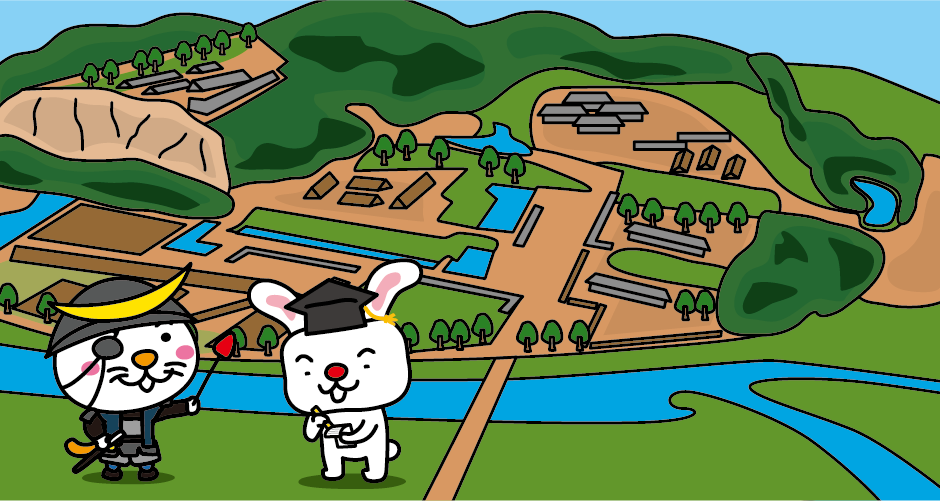
Honmaru of Sendai Castle is the mountain castle, which makes it easy to defend and difficult to attack, surrounded by cliffs facing the Hirose River to the east, a mountain forest called “Ourabayashi” to the west, and the Tatsunokuchi Valley to the south. After Masamune’s death, the second feudal lord, Tadamune, built Ninomaru (outer citadel) at the foot of Mt. Aoba, after the Ninomaru was completed in 1639, the Ninomaru was the center of domain administration until the end of the Edo period (1868). In the Meiji era, Sendai Castle came under the jurisdiction of the Meiji government, and military facilities were placed in the Ninomaru, but most of the buildings in the Ninomaru were destroyed in a fire in 1882. In addition, the building in Honmaru was also demolished at the beginning of the Meiji era.
Today, the area around the castle ruins is Aobayama Park, and in addition to the equestrian statue of Masamune Date , there are Gokoku Shrine in Miyagi Prefecture and the Sendai Castle Guidance Facility on the site of Honmaru. Ninomaru is the campus of Tohoku University, and Sannomaru (outermost region of the castle) is the Sendai City Museum. Only a few stone walls remain as remains.
Masamune Date equestrian statue at Sendai Castle

The equestrian statue of Masamune Date, which stands on the castle tower base, is a representative scenery of Sendai City. The current equestrian statue is the second generation installed in 1964. The first equestrian statues were offered to the government to compensate for the lack of metal needed to manufacture weapons for World War II. By the way, Masamune Date is known as a one-eyed dragon, but most portraits created after his death, such as the equestrian statue at the Aoba Castle Ruins, do not wear an eyepatch. This is said to be due to Masamune’s will.
The illuminated equestrian statue of Masamune Date at Sendai Castle
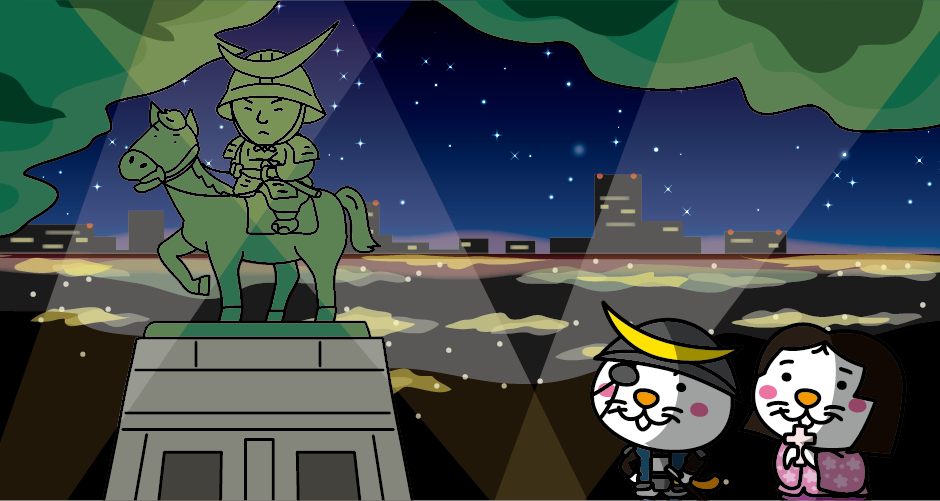
The equestrian statue of Masamune Date and the stone walls of the Sendai Castle Ruins are illuminated from sunset until 11:00 pm. The Honmaru ruins are located at an altitude of 130m, so you can see the night view of Sendai’s central city below.
Sendai Castle, the model for the song “Kojo no Tsuki”

The middle school song “Kojo no Tsuki” (Lyrics: Bansui Doi / Composition: Rentaro Taki) was written by Bansui Doi, who was born in Sendai, modeled on the desolate “Sendai Castle”.
The Hirose River as seen from the Sendai Castle Ruins
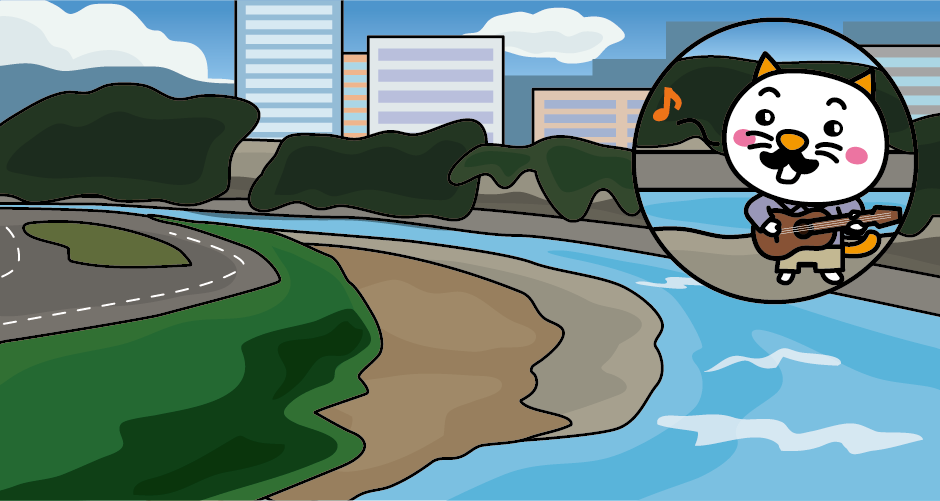
The Hirose River flows like the outer moat of Sendai Castle. You can also see the Hirose River from the ruins of the main enclosure, and hum along to the melody of the song “Aobajo Koiuta,” which was a big hit in the 1970s.
Restored Wakiyagura at the site of the Ote-mon Gate of Sendai Castle
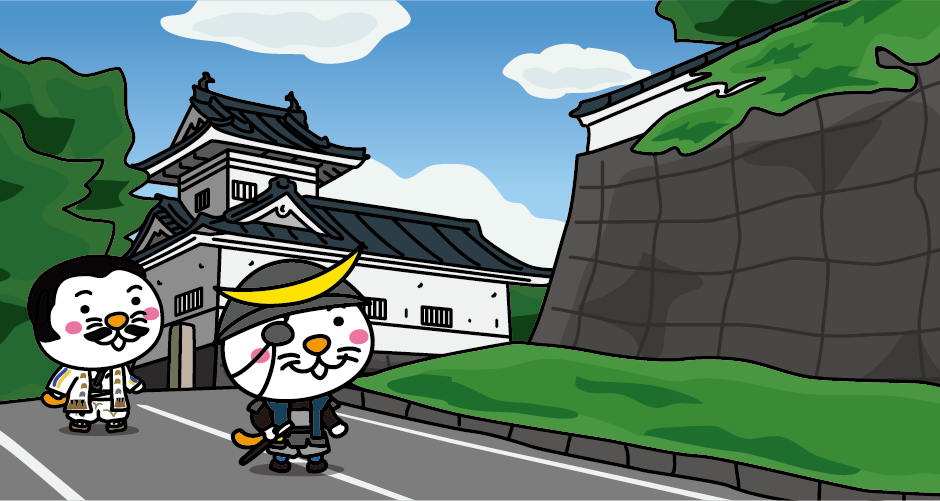
Both Otemon Gate and its Wakiyagura (side watchtower) were designated as national treasures before the war, but they were destroyed by fire in the Sendai air raid of 1945. Wakiyagura was restored in 1967.
Sendai City Museum in Sendai Castle Sannomaru Ruins
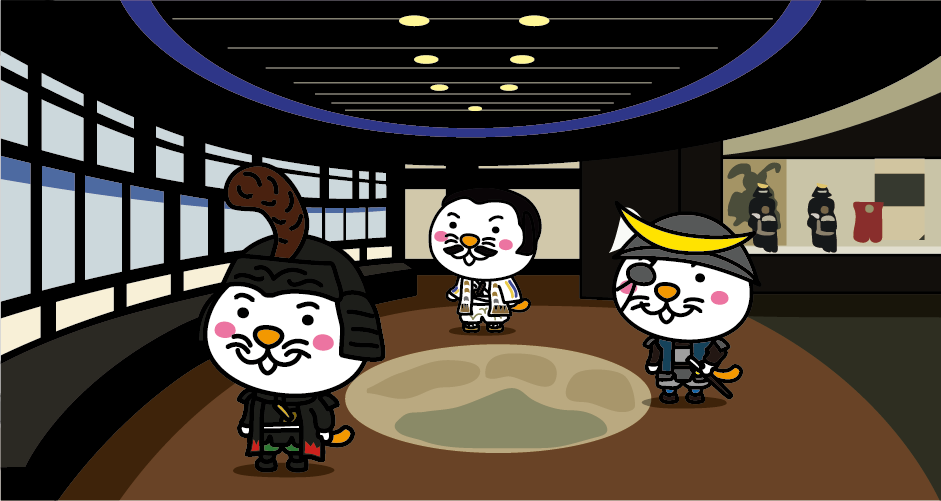
The Sendai City Museum, located in the ruins of Sendai Castle Sannomaru, is a museum that preserves and exhibits cultural properties donated by the Date family to Sendai City. About 97,000 items such as historical materials, cultural materials, and arts and crafts related to the Sendai domain are stored, of which about 1,000 items are on display.
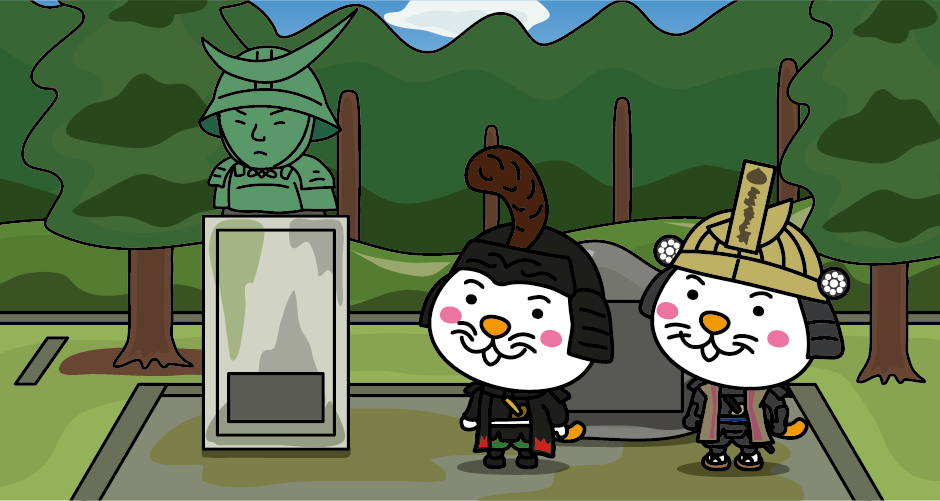
The bust of Masamune Date on the premises of the Sendai City Museum is part of the first equestrian statue that was installed in the ruins of Honmaru in 1935. It was removed during the war to supply metal, but in the confusion after the war, the part above the chest was discovered by chance.
Outer moat of Sendai Castle (Goshikinuma Pond)
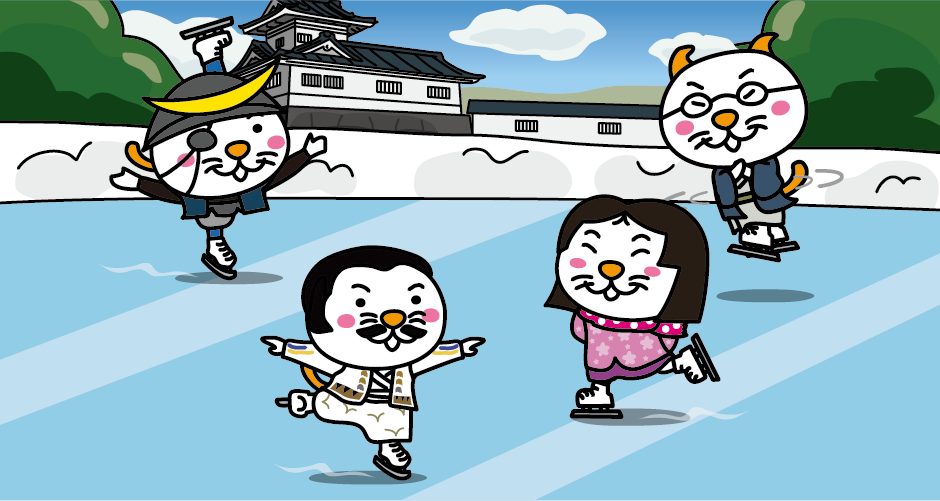
Goshikinuma Pond was originally part of the outer moat surrounding Sendai Castle, extending from the north side of the Sannomaru to the Otemon Gate. Goshikinuma Pond is said to be the birthplace of figure skating in Japan. At the beginning of the 20th century, students at Tohoku University learned how to skate from their German teachers. After that, Tohoku University graduates worked to popularize and teach figure skating throughout Japan.
Zuihoden Mausoleum

Zuihoden Mausoleum is the mausoleum of Masamune Date. Zuihoden Mausoleum, built in 1637, is a gorgeous building that conveys Momoyama culture (late 16th century). It was designated as a national treasure before the war, it was designated as a national treasure before the war, but was destroyed by fire during the Sendai air raid, and was rebuilt in 1979.
Osaki Hachimangu Shrine
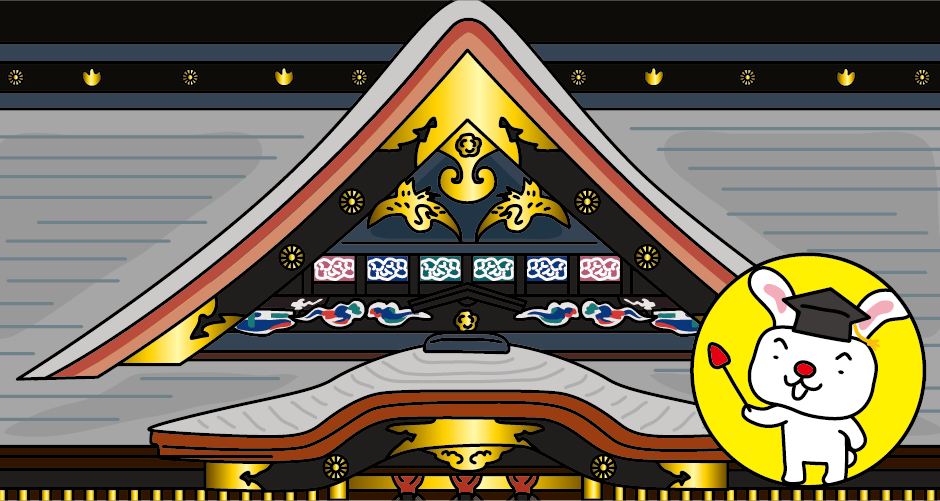
The main shrine building of Osaki Hachimangu Shrine is a splendid building representative of the Momoyama culture, built by Date Masamune inviting master craftsmen from Kamigata region (Kyoto and Osaka) who were said to be the best of the time. It is designated as a national treasure. It is characterized by the fact that the main hall, where the gods are enshrined, and the worship hall, where people worship, are connected by a room called “Ishi-no-ma” (stone room), and the Nikko Toshogu Shrine, where Ieyasu Tokugawa (Tosho Daigongen) is enshrined, also used this style. This style of shrine is called “Gongen-zukuri”.
Access to Sendai Castle
From Tokyo
It takes about 1 hour and 30 minutes from JR Tokyo Station to JR Sendai Station by Tohoku Shinkansen. From the JR Sendai Station West Exit Bus Terminal to the Sendai Joshi bus stop, it takes about 30 minutes by sightseeing bus.
From Osaka
It takes about 1 hour and 15 minutes from Itami Airport to Sendai Airport. It takes about 25 minutes from Sendai Airport Station to JR Sendai Station by Sendai Airport Line.
